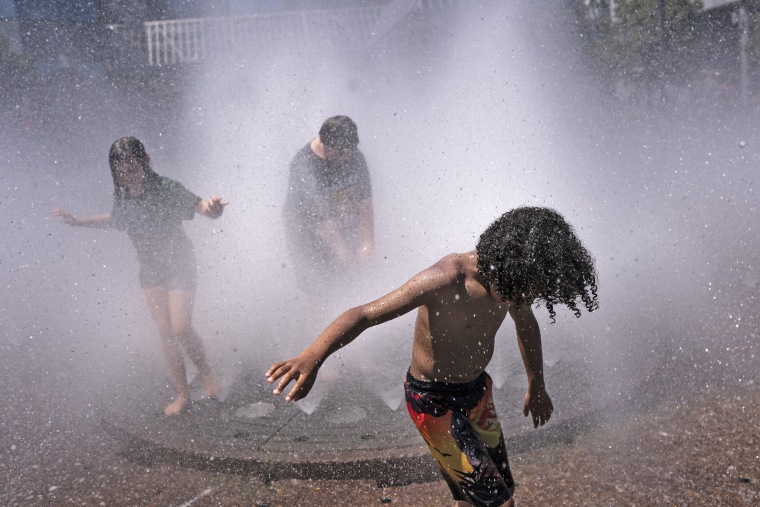The Pacific Northwest on Monday was in the midst of a heat wave never seen before.
Portland, Oregon, hit 112 degrees Sunday, shattering the previous record by 5 degrees.
Seattle also set a record high, hitting 104 degrees Sunday, breaking the previous record by 1 degree. Seattle also experienced its first back-to-back 100 degree days in history and will go for the hat trick Monday.

Canada set a national record for highest temperature at 116 degrees. That's just 1 degree shy of Las Vegas' hottest temperature on record and hotter than the all-time record highs for 31 states, including several in the South.
After moving races to earlier in the morning, the U.S. Olympic team trials for track and field were halted Sunday afternoon, after track temperatures in Eugene, Oregon, registered nearly 150 degrees. Events resumed after sunset.
Infrastructure also was affected, as roads buckled and cracked due to expansion from the extreme heat.
Flash flood concerns and evacuation orders were prompted near rivers, thanks to rapid snowmelt due to the heat in parts of southeast Alaska and British Columbia.
The forecast for Monday was for even hotter temperatures. On Monday morning, Seattle's forecast called for an afternoon high of 110 degrees, and Portland was likely to hit 114 degrees.
About 23 million people remained under heat alerts as temperatures were forecast to soar 30-40 degrees above average. For millions, Monday will be the third straight day of record highs.
In fact, a large portion of Portland's public transportation, including the Light Rail and Streetcar Service, was expected to be shut down Monday because of the extreme heat.
Fortunately, after Monday, temperatures will gradually decrease through the week.
The "perfect storm " of ingredients came together to produce the extraordinary heat.
First, a northward buckle in the jetstream, called a ridge, allowed hot air to engulf the region. This extreme ridge was caused by a blocking pattern called an Omega Block, because the wavy jet stream takes on the shape of the Greek letter Omega.
That, combined with a strong area of high pressure, caused sinking air and cloudless skies leading to full and blinding sunshine that baked everything underneath.
Finally, winds were largely out of the east, leading to down sloping winds off the mountains that made the air temperatures even hotter. When air sinks and compresses, it heats up even more.
And yes, climate change made it worse.
The extreme northward buckle in the jet stream was caused by a blocking pattern, and climate change is causing these types of extreme blocking patterns to occur more often and last longer. Climate change is also leading to warming temperatures overall, which makes the baseline temperatures for heat waves higher than they otherwise would have been decades ago.
The Pacific Northwest isn't the only region of the country experiencing blistering heat.
About 34 million people were also under heat advisories across the Northeast and New England on Monday where above-average temperatures combined with high humidity will lead to afternoon temperatures in the upper 90s, with it feeling as high as 105. This includes Philadelphia, New York and Boston.
Washington and Boston will both make a run for 100 degrees, with forecast highs around 97 Tuesday and Wednesday.
New York was forecast to have a heat index of 101 Monday and 104 Tuesday.
Wednesday will be the hottest day for the Northeast and New England before temperatures cool down toward the weekend.
